 Colonials in South Africa experience a different type of rhythm and blues. 
South Pacific. South America. South of France. We don't care—we love books sets in exotic places wherever they might be. Tell It on the Drums takes readers to South Africa as five men attempt to escape with $250,000 in diamonds from a dusty mining town called Kimberley and reach Pretoria. The story is basically a western escape tale, set in the late 1800s, when places like the Orange Free State and Cape Colony still existed, and the law was something that could be outdistanced on the back of a good horse. Pursuit is inevitable, but paranoia too. And as you'd expect, the real problem is not the law but the fractious partnership between the quintet of fugitives, which includes fearsome U.S. Civil War rebel Adam, craven Boer mercenary Coenraad, and compulsive French thief Dénis.
The 24/7 throbbing of drums is intelligible to tribespeople, and relays news in rhythm about the robbery. The five fugitives are soon known throughout the land, as are their movements and deeds. They have an inkling reports of their heist have travelled by air, but still think they're escaping secretly. It's an illusion. Too bad none of them understand the drums, because they begin urging that the quintet be herded north for some mysterious purpose. Surprisingly, Krepps splits the group up at that point in the story. Coenraad and Dénis trek upcountry to trick tribesmen out of their riches. Adam and one other continue fleeing to Pretoria. The inside man-turned-unwilling accomplice bolts into the veldt but is taken on by a veteran hunter. All the while the drums say: north, send them north, and it's clear that a reckoning looms.
We'll stop there, but we want to note a great set piece—to steal a cinematic term—involving a mass charge by twenty enraged baboons. It's a centerpiece sequence, all teeth, fangs, gunsmoke, and blood, and it's well written. Krepps is a solid writer on all fronts. Tell It on the Drums moves quickly and there are no moments where the narrative falters or feels forced. All the usual warnings about mid-century literature set in Africa apply, but in this case Krepps gives South African tribespeople agency via his device of coded drum talk. Drums speak in most novels of this type, but this time they're in all places at all times, surrounding the white men, and seem to be the entity in control. It adds a nice layer of dread. Overall, an excellent book, with nice cover art by Robert Stanley.
 Wild life abounds on sexploitation safari. 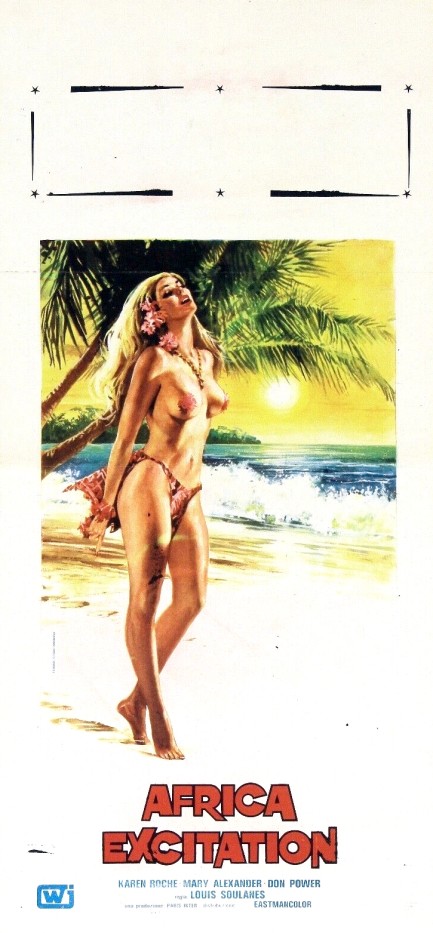
This free-spirited poster was made for the sexploitation flick Africa Excitaction, which was originally French/Italian made and realsed in the U.S. as Jungle Erotic. The main brain behind the production was Polish writer-director Zygmunt Sulistrowski, who also stars under the name Don Power, because, if you're gonna write and direct a horny epic, it might as well be you doing to grinding and gyrating. Even simulated sex can be fun—so we hear. Zygmunt didn't star as himself, but as Darr Poran. In addition, the listed actresses, Karen Roche and Mary Alexander, were credited as Carrie Rochelle and Alice Marie. It almost seems as if nobody wanted their names on this movie.
Plotwise, there's nothing complex here. Zygmunt takes two models and his amphibious car to Africa for an extended photo session and some employer-on-employee al fresco lovin'. That may sound fun, but the movie is basically a total loss. It's not coherent, and nobody can act. But—and there's always a but—it's a sexploitation flick, which means all it really needs is to deliver scenery, skin, and sin. The first comes from shooting in Tanzania and Uganda, the second is provided by co-stars Rochelle and Marie, and the third—well, there's plenty of softcore writhing. So in the end, you win. Africa Excitaction has no precise premiere date, but it debuted in 1970.
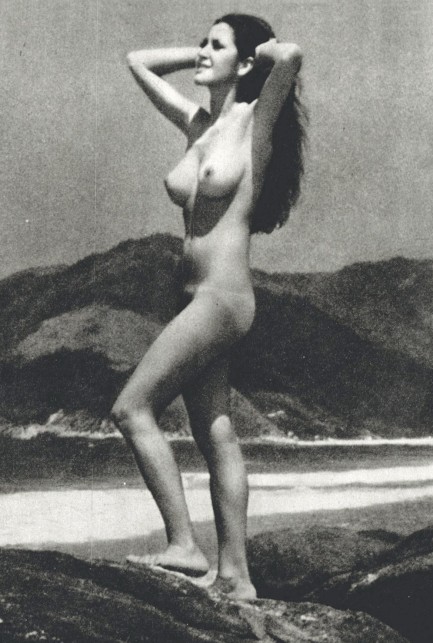 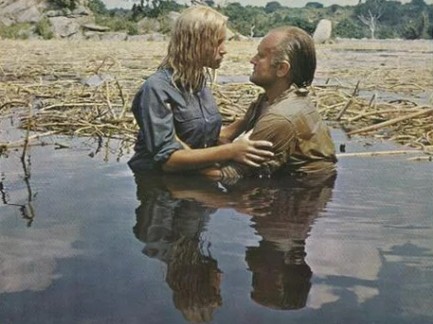 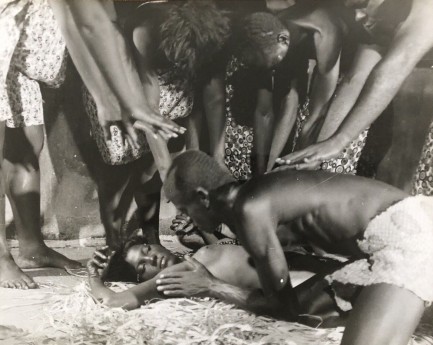 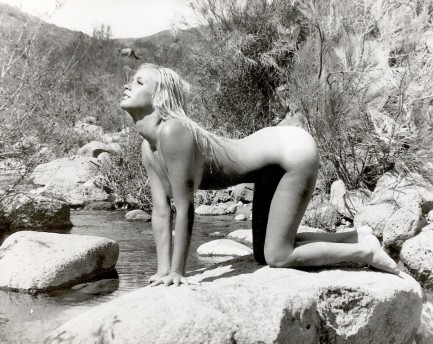 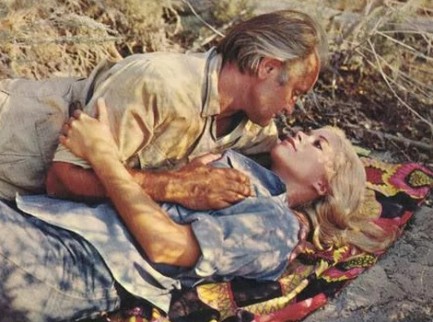 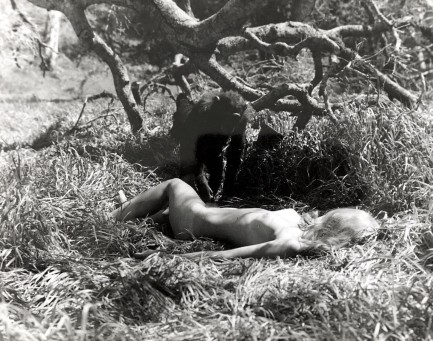 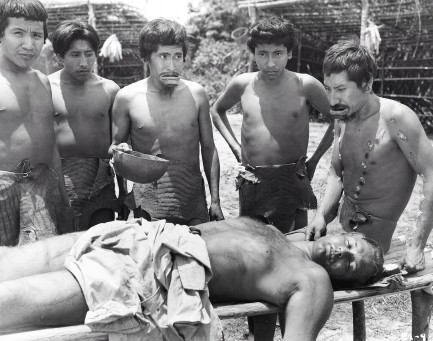 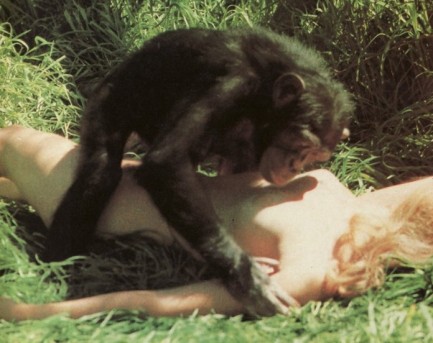 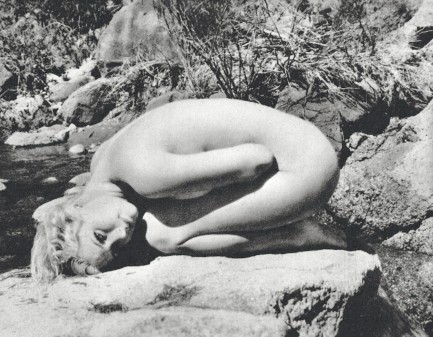 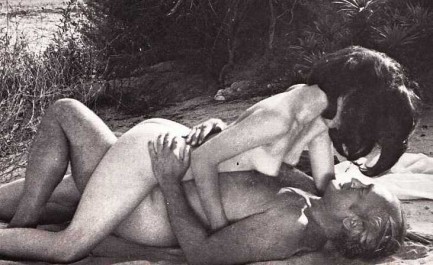 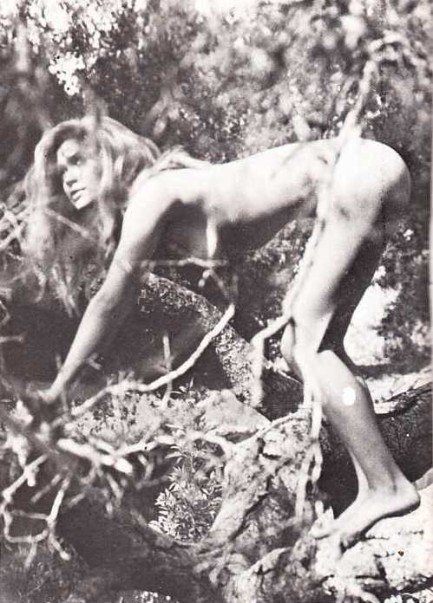 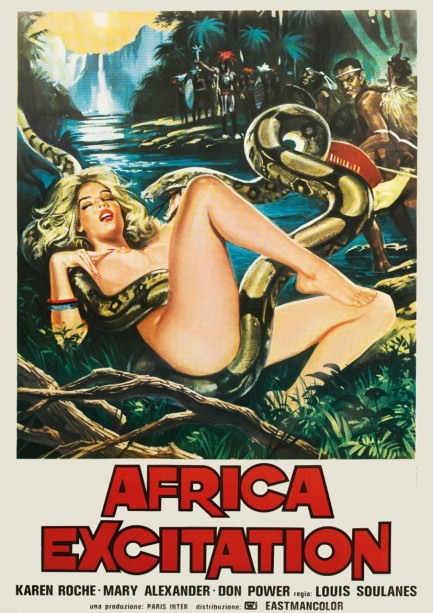
 So long, suckers! There'll never be a star like me again. 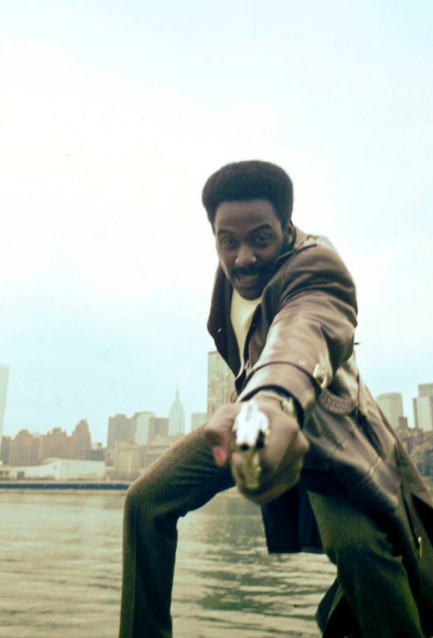
Richard Roundtree, during his long show business career, appeared in scores of movies and television shows, but his first film role was in Shaft and he'll always be known for what can only be described as a cultural awakening, a watershed moment that moved black-centered cinema into the mainstream. It precipitated a flood of capital brought to bear on the genre by investors seeking easy returns, which undermined blaxploitation cinema much same way capital brings a flood of condos to a thriving ethnic neighborhood. Even so Shaft has stood the test of time, is one of the better action movies of the 1970s, generated the sequels Shaft's Big Score and Shaft in Africa, as well as a series of novels, and has remained within the American consciousness thanks to its popular soundtrack, its many lyrical references in hip-hop, and its one-of-a-kind star. Roundtree died today at age eighty-one.
 Toto we’re not in Africa anymore. 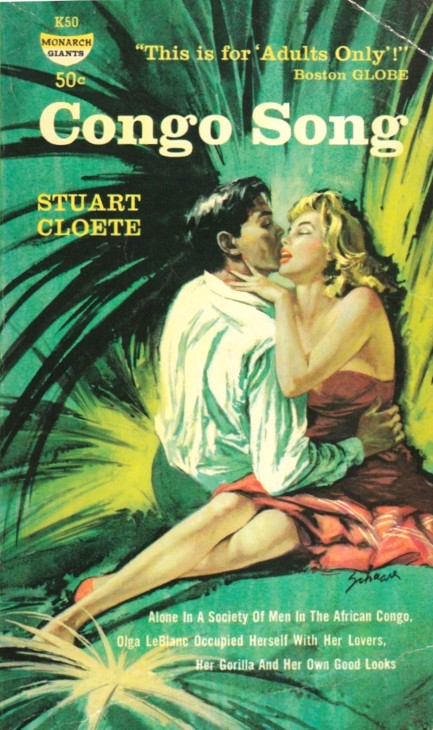
We said we'd get back to Stuart Cloete’s 1943 jungle drama Congo Song, and here we are. The book has been reprinted often, including in the 1958 Monarch edition you see above, with Harry Schaare cover art. Its popularity certainly owed something to the fact that it was another book that nurtured popular Western stereotypes about life in Africa, including that it attracted decadent and damaged whites whose weaknesses were inevitably amplified by the deep, dark, primitive, savage, mysterious continent. You've read something like this once or twice, we bet, thanks to Hemingway and others, though Cloete, who was from South Africa, writes in an entirely different style than Papa:
This was the Congo song: the song of sluggish rivers, of the mountains, the forests; the song of the distant, throbbing drums, of the ripe fruits falling, of the mosquitoes humming in the scented dusk; the song of Entobo, of the gorilla, and the snake. The song no white man would ever sing. The wild dogs cry out in the night as they grow restless, longing for some solitary company. Oops—that last sentence is from the Toto song “Africa.” Don't know how that slipped in there. Anyway, Congo Song unfolds in the months before the start of World War II. Cloete’s characters are diverse, with his main creation being Olga le Blanc, the only woman living in an isolated outpost called Botanical Station with several men, including her husband, a researcher who spends a lot of time away. Olga is a vamp who must make other men fall in with love her, and her affections don't end at homo sapiens sapiens—she has a gorilla, unsubtly named Congo, that she nursed at her own breast when it was an infant. Cloete’s symbolism is pretty thick milk. Erudite conversation, circular philosophizing, seductions, and secrets abound at Botanical Station. One of the other main characters is an American named Henry Wilson who has been sent by handlers in Nairobi to keep an eye on the doings of a German spy named Fritz von Brandt. Olga, meanwhile, spies on von Brandt for the English—sometimes from his bed. Other characters have less purpose, and many eccentricities. One drinks too much. Another sleeps with teenaged Congolese girls under the guise of employing them as domestics. The researcher seems to love trees more than Olga. Nobody is particularly happy. Who is who? Who wants what? There's another spy, who we won't name, a machine-like man, asexual, immune even to Olga: Women were the weakness of so many. Money, luxury, power, all resolved themselves finally into women. That was where the money went. That was what the power was used to obtain. How lucky he was to have been born without sexual feelings. All the duplicity in Congo Song derives from the looming war in Europe, but there's also another driver: “Under all this,” Olga observes, “is the never-ending fight for the riches of Africa.”
Despite all the dinners, safaris, subterfuges, and soliloquies—or maybe because of the soliloquies—the book doesn't gather momentum until about page two-fifty, after a fatal accident. Then things move fast enough to cause whiplash. Death comes by various methods, none of them banal. And of course there's still that gorilla. He lives in the house with the le Blancs, but Olga lets him loose regularly. Surely that'll end with limbs separated from bodies and blood on the louvered doors. And Cloete clearly must—absolutely must—squeeze in a little lethal witch-doctoring. No more plot hints. However, it isn't a spoiler to reveal that since Cloete follows the basic blueprint of other books of this type, at least a character or two eventually flee for modern civilization. But they'll remember Congo with bittersweet nostalgia—primarily during a maudlin denouement drawn out over several chapters. But it's understandable—it's not easy to let go of such beauty and horror. Not easy to let go of Congo Song either. It wasn't perfect, but it was very interesting. It’s gonna take a lot to take me awaaaay from yoooou… There’s nothing that a hundred men or moooore could ever doooo… I bless the rains down in Aaaafricaaa… 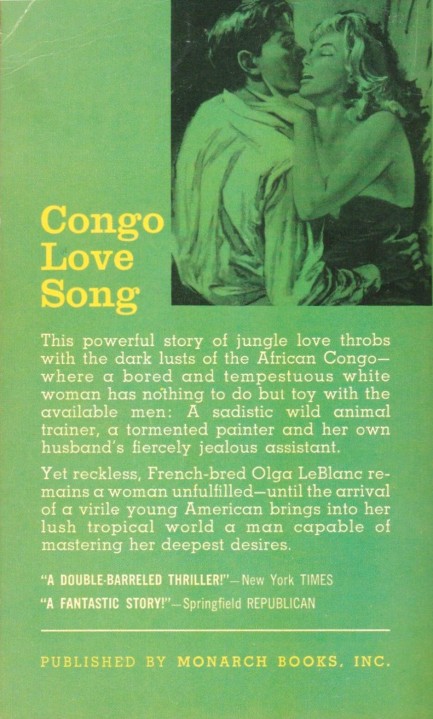
 Yugo wherever you can to find good art. 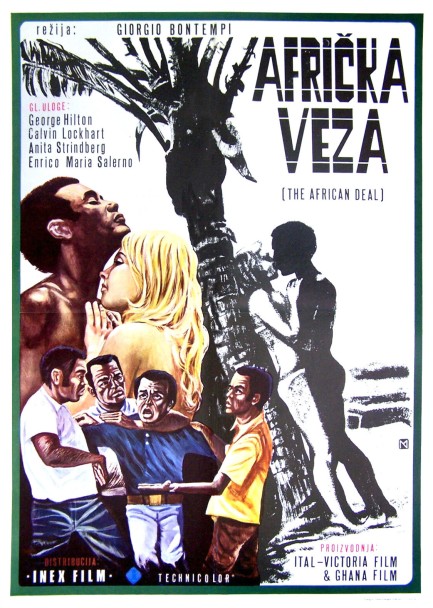
Something unusual we ran across recently. Above you see a Yugoslavian poster for Afrička veza, an Italian film originally made in 1973 as Contratto carnale, released in English as The African Deal, and shot in Ghana. The poster is unusual because, though its text is Croatian, the actual art very much echoes vintage Ghanaian movie posters, such as here and here. We've never seen a Yugoslavian poster in this style. Our opinion is that because the movie was made in Ghana and was certainly released there at some point, the art was painted for a Ghanaian poster then borrowed by the Yugoslavian distributors Inex Film. We talked about Contratto carnale a few years back. It starred George Hilton, Calvin Lockhart, beautiful Anita Strindberg, and yummy Yanti Somer, was originally released in 1973, and premiered in Yugoslavia sometime in 1976.
 Okay, I think we're ready. Formula for edible pomegranate flavored body oil, test seventeen, commencing now. 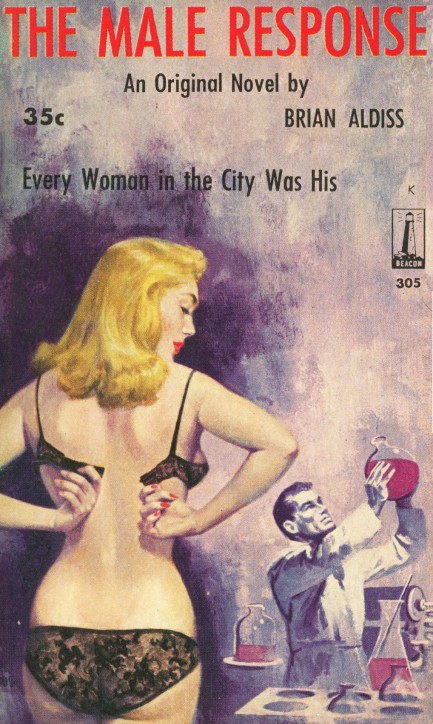
Brian Aldiss was better known as a sci-fi author, but his 1961 novel The Male Response deals with sexual mores and politics. On Aldiss's website he writes: “Only marginally science fiction, the story tells how the indecisive Soames Noyes is sent by his company with a computer to the newly free black state of Goya, in Africa, where he becomes entangled with women and witch-doctors. Reluctantly, Noyes faces all challenges and, following by public promiscuity, becomes President.” That certainly sounds fun, especially the promiscuity to president part. It obviously could only happen in sci-fi. The cover art here is by Robert Stanley.
 Italian shockumentary about Africa is all voyeurism and no reflection. 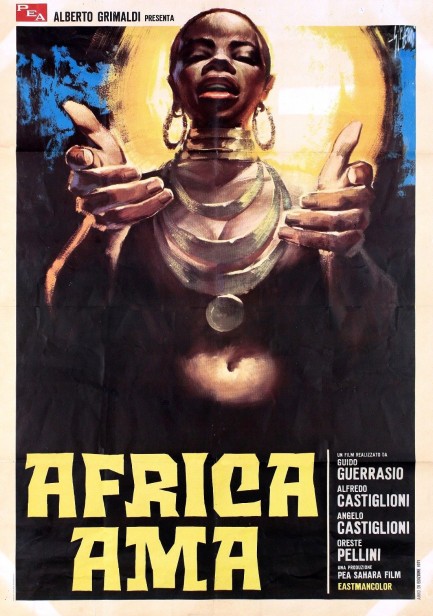
Lately we've been highlighting Italian illustrator Sandro Symeoni's brilliant paperback covers, but today we've decided to bring him back as a poster artist, which is how he first found acclaim, and why we first noticed him. He painted this for the schockmentary Africa ama, which would translate as “Africa loves,” but is known in English as Africa Uncensored. 1970s shockumentaries have an educational veneer, but are mostly about cultural titillation and making viewers in modern countries lose their lunches, as practices such as male and female circumcision, animal killing, and scarification are filmed unflinchingly and up close.
This genre of movies, particularly popular in Italy, showed all this and did it with zero self awareness, considering modern powers didn't just engage in torture and killing during their empire building, but industrialized it. It takes efficiency to slaughter millions. Of course, pointing out that indisputable fact makes people angry in this anti-truth age, so we'll move on and note that Africa ama was mostly the brainchild of brothers Angelo and Alfredo Castiglioni, a couple of guys we've run across before for their archaeology work. See what we mean here. Africa ama premiered in Italy today in 1971, and if you dare you can watch it here while the link lasts.
 Mogambo features the cruelest beast in all of Africa—and its name is Clark Gable. 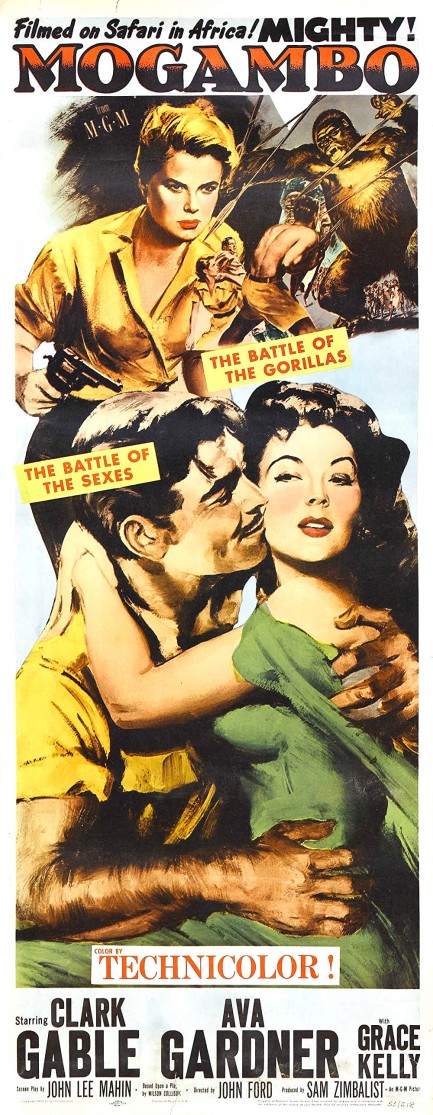
As famous as Mogambo is, we'd never seen it, had never read a review of it, and had no idea going in what it was about except that it was a safari movie and a remake of the 1932 adventure Red Dust, which we'd also never seen. There are few hit movies—especially with stars the stature of Clark Gable, Ava Gardner, and Grace Kelly—that we don't know at least a little something about. So we cleared the slate, cooked up some popcorn in our special Lindy's hand-cranked popper, and settled in for a screening.
Shot in Kenya, Uganda, French Equatorial Africa (now Central African Republic), and the Tanganyika region of what is now Democratic Republic of Congo, the movie is about a hard-edged safari guide and hunter played by Gable (also the star of Red Dust, by the way) who tries to score with both Gardner and Kelly, and soon has them at each other's throats. These old movies often work on the presumption that the male star is irresistible—period. As a result, screenwriters were sometimes lazy. They'd fail to write the male lead with any charm at all.
That holds true here, as Gable is gruff, rude, twenty years older than Gardner, and almost thirty years older than Kelly. We're fine about the age difference, unlike the “age appropriate” crowd that thinks women are capable of making any decision except ones about whom they love, but because Grant is a complete sourdough some charm would have made Gardner's and Kelly's attraction to him more understandable. Handsome though he may be, here he's nothing more than moustache, hair tonic, and bossiness. But okay, Gardner and Kelly are both in states of need, and Gable is more than happy to introduce them to his bush snake, so what you get is a love triangle folded inside a Technicolor safari adventure. Fine.
The production is spiced up with majestic scenery, nice costumes, realistic animal footage, an overwhelming feel of the exotic, the tantalizing implication of intimacy with two of the most beautiful women in cinema, and a deft, assured performance from Gardner. In fact, while Gable is top billed, Ava gets nearly all the good lines. “Listen, buster,” she scolds Clark, “you and your quick-change acts aren't gonna hang orange blossoms all over me just because you feel the cold weather coming on!” That's a scathing way to call someone old and desperate. But Gable has his moments too. We liked when he blustered, “You know how it is on safari. It's in all the books. The woman always falls for the white hunter and we guys make the most of it.” That's meta, so we hear.
Obviously, tribespeople figure prominently, and you can discern marginal improvement in their portrayal since the days of Weissmuller's Tarzan. They're still just ornamentation in their own lands, but at least none lay down their lives to save a white man who's spent most of his screen time cracking a whip at them. Whew. Overall, we thought Mogambo was decent. Not great, mind you—because Gable deserved to play a more nuanced character and did not have that chance—but it was decent. It premiered today in 1953.
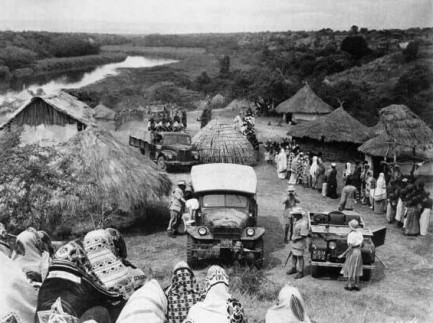 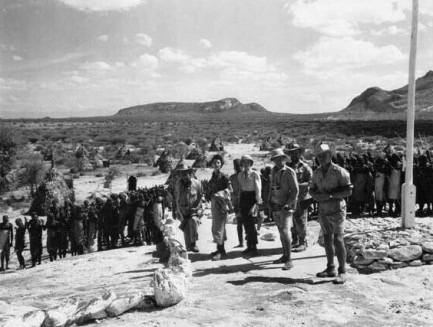 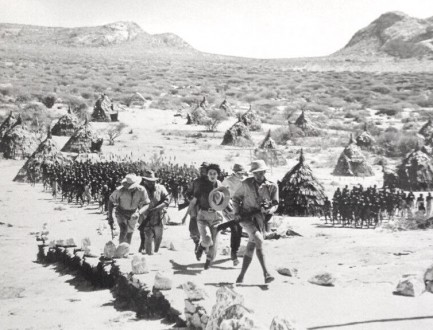 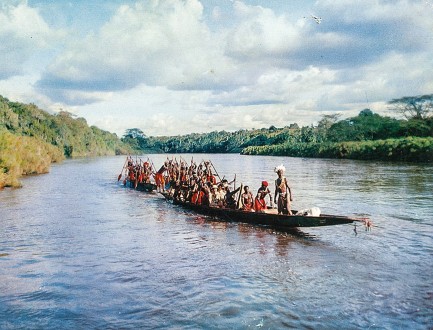 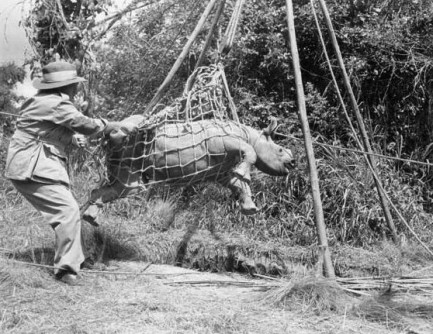 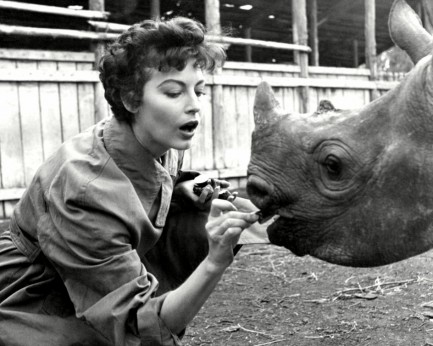 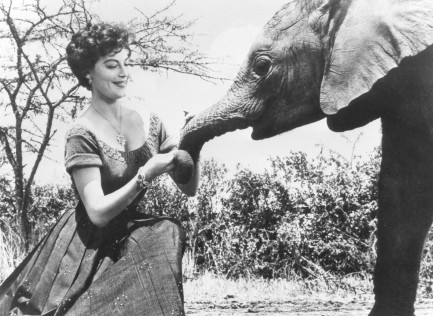 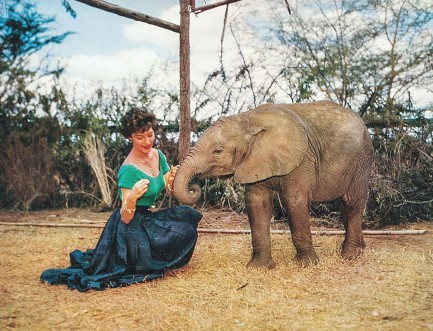 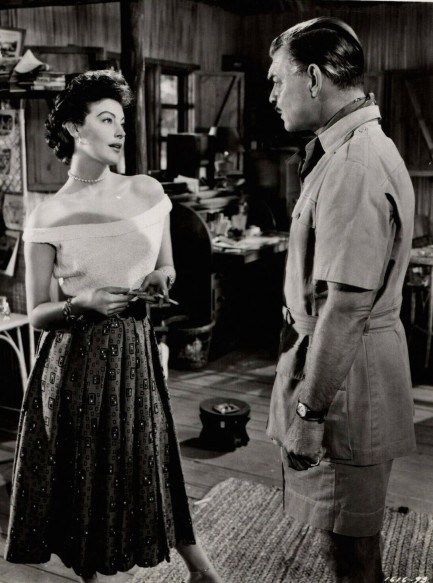 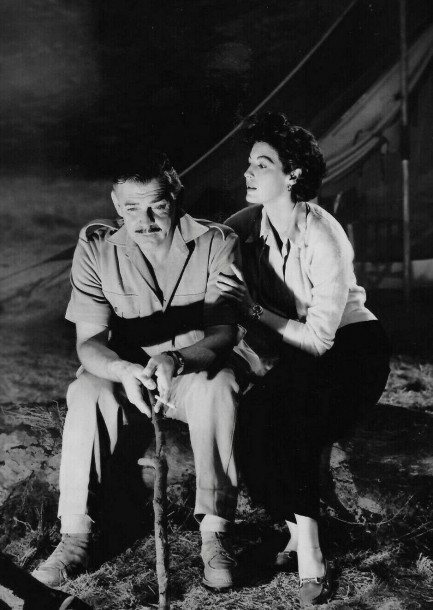 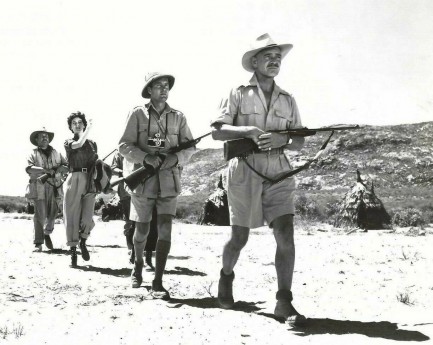 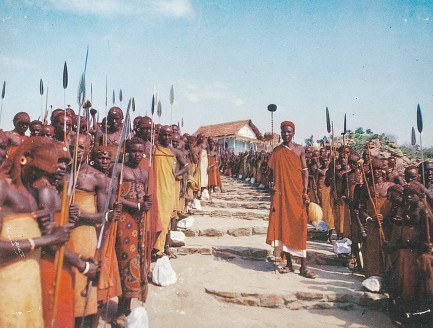 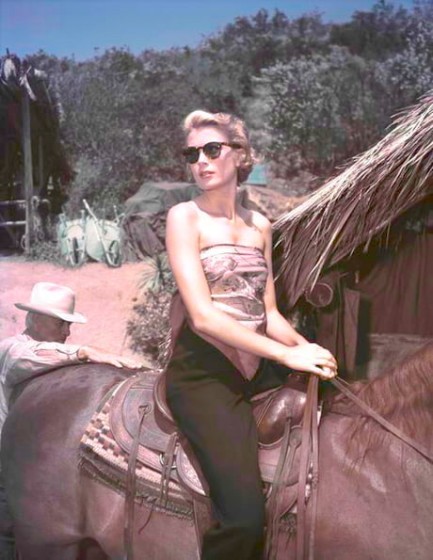 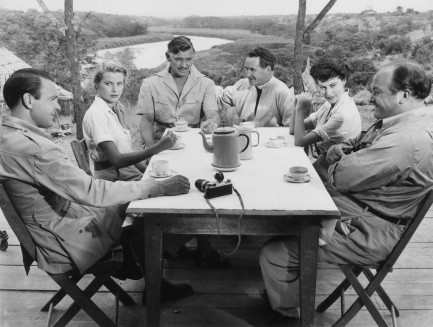 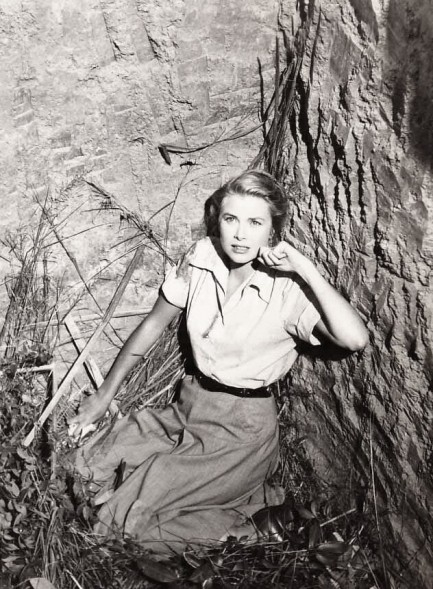 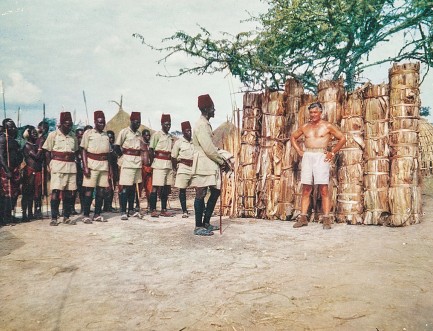 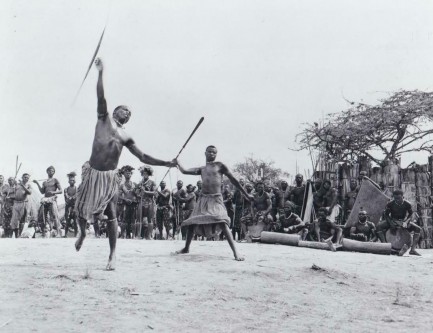 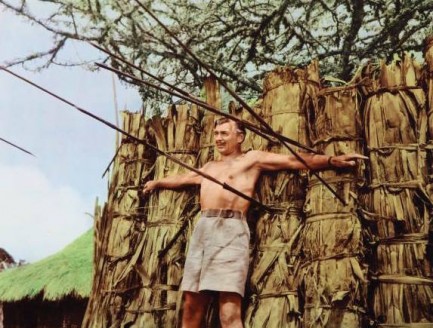 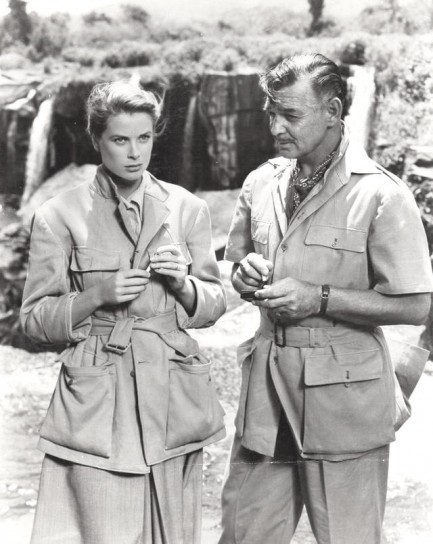 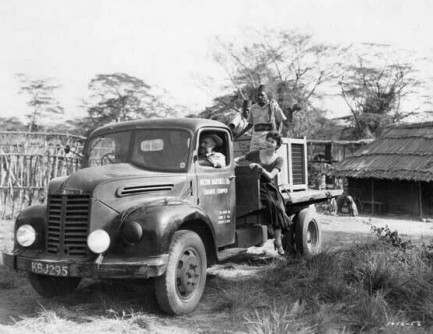 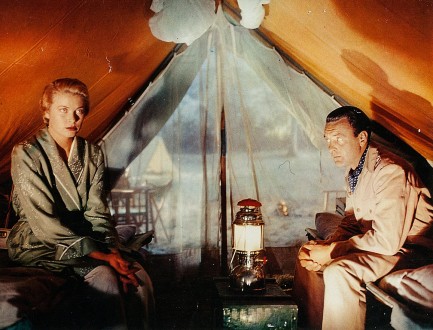 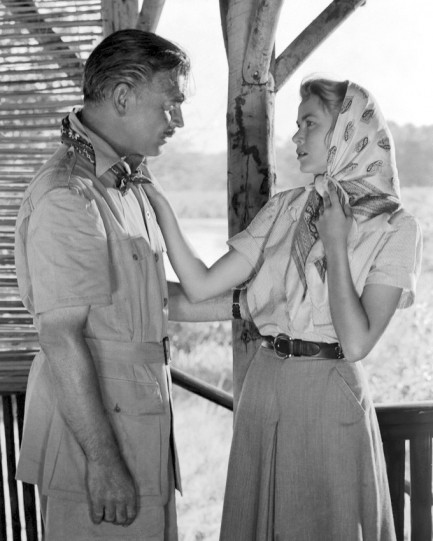 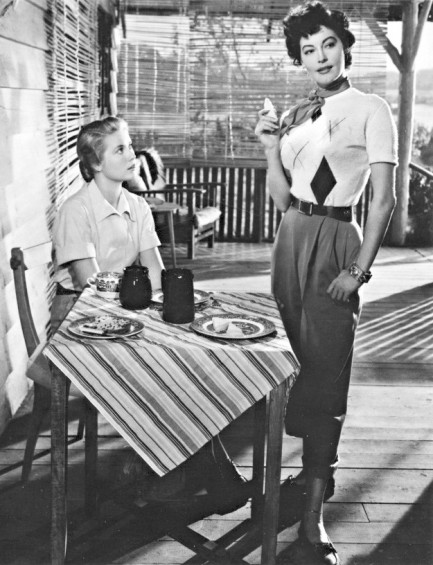 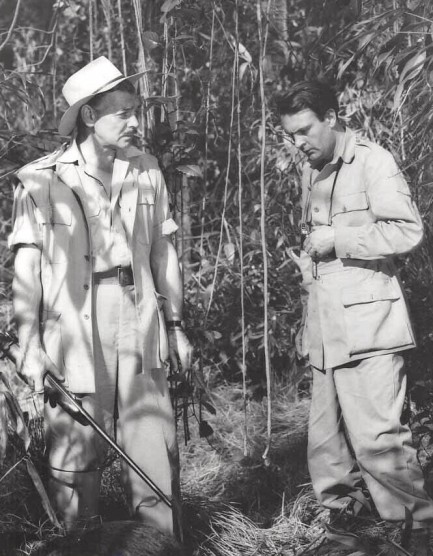 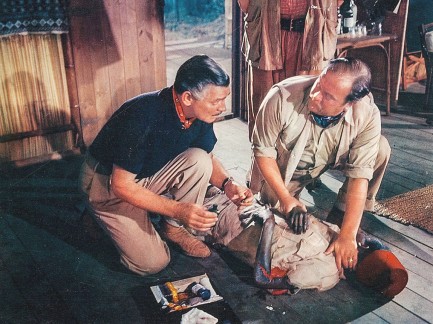 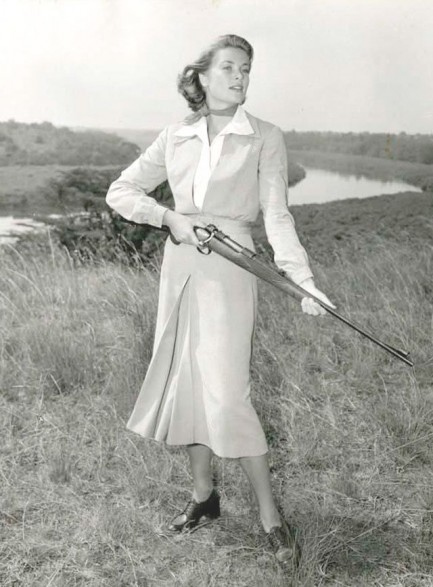 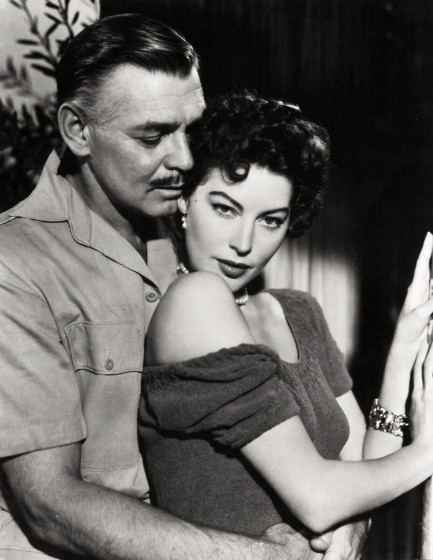   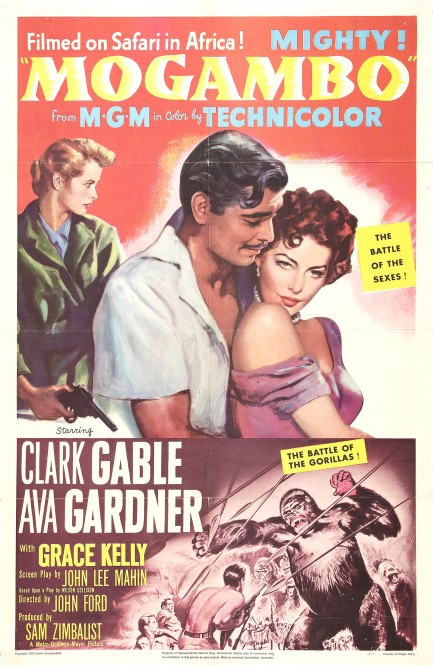
 Shaft comes out swinging in the third entry in his revered blaxploitation franchise. 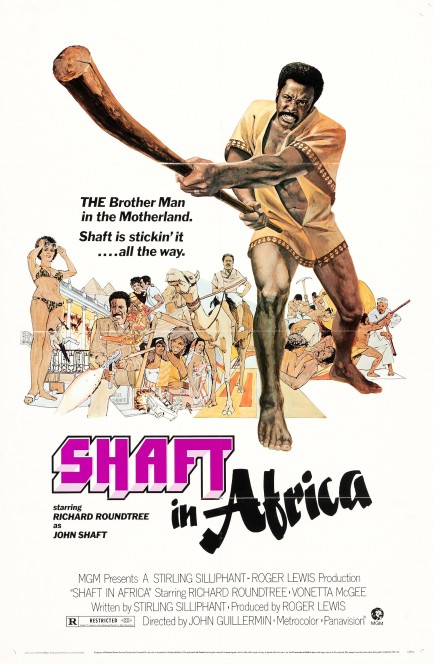
This John Solie poster of Richard Roundtree brandishing a massive shillelagh or whatever was made for the third film in his iconic Shaft trilogy, Shaft in Africa, which was released today in 1973. Film series often try to go bigger with each entry, so it's no surprise that this one went clear to Africa during the height of the blaxploitation wave. Looking at the poster, we wonder if the stick gimmick influenced the next year's Black Samson, in which Rockne Tarkington carried a shillelagh of his own. Cinema being generally referential, we're guessing yes. But the similarities between the movies ends there. Black Samson was exclusively concerned with urban Los Angeles, while Shaft in Africa spans three continents and touches on some unusual subject matter.
The story revolves around New York City private dick John Shaft being asked to bring down a modern slavery ring. We should note, for any who don't know, that this evil thrives in 2022. In modern slavery, people desperate for work are offered foreign jobs that turn out to be brutal and pay so little—or nothing—that its victims are trapped. They can neither escape nor go to the police, because they soon learn that their work papers are fraudulent, and are told by their enslavers that the police will imprison them for illegal immigration. Operations of this sort have been broken up in recent years in New York, Georgia, and Texas, where a sex slavery ring was uncovered in Dallas. Elsewhere, slavery rings have been busted in the British Midlands, Australia, and perhaps most notably in Dubai, where Amnesty International says forced labor was used to prepare Qatar for the upcoming World Cup.
Shaft is tasked with traveling to Ethiopia, where he will pose as a local and allow himself to be recruited by slavers so he can gather evidence for French authorities, who have learned that the victims end up in Paris. Unfortunately, Shaft quickly realizes his cover has been blown and that he can't trust anyone. In a classic American cinema example of vigilantism becoming the last best option, he decides that rather than gather evidence against the slavers it'd be better if he went human tornado on the whole stinking lot of them. He becomes, in essence, the classic cop out of control, leaving chaos in his wake as his erstwhile handlers survey the damage and occasionally go sacre bleu!
In an interesting subplot, Vonetta McGee plays Aleme, tasked with teaching Shaft local ways and a bit of language. Shaft is dismayed to learn that she's on the cusp of receiving her clitoridectomy, a coming-of-age ritual generally referred to these days as female genital mutilation. Shaft: “Listen, baby, how in the hell are you gonna know what you're missing unless you give it a little wear and tear before they take it away?” It's glib, but there's a serious undertone—probably not enough for anyone horrified by the practice, but you really can't expect more for the time period. It's actually amazing it was mentioned at all. Because this is a Shaft movie, Aleme has a hands-on experience with the hero's big brown stick and decides she better hang onto her clitoris after all.
What can you say about a movie that features Roundtree reprising his immensely popular and groundbreaking private eye, and that deals with two hot-button social issues decades before they were on the minds of the Western public? The budget is big, the pace is fast, and the international setting in and around Addis Ababa, with some scenes shot in Massawa, Eritrea, and a climax staged in Paris, offers plenty of appeal. In addition, there's McGee, a very beautiful actress who in this outing looks even better than usual, while Serbian actress Neda Arnerić plays a ridiculously horny femme fatale who'll do anything to get Shaft in the sack. Action, commentary, sex, and a bit of humor—those are excellent ingredients, but even with all that and the virtual kitchen sink thrown in we don't think Shaft in Africa is as good as the original. But that's no surprise. There's really nothing like the first time.
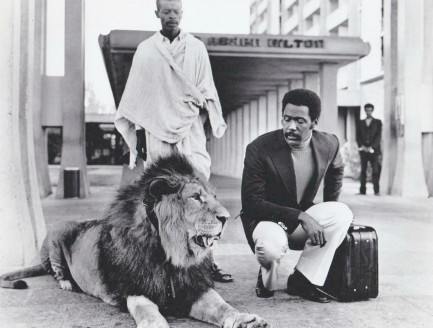 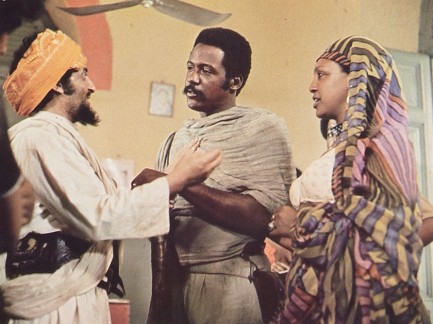  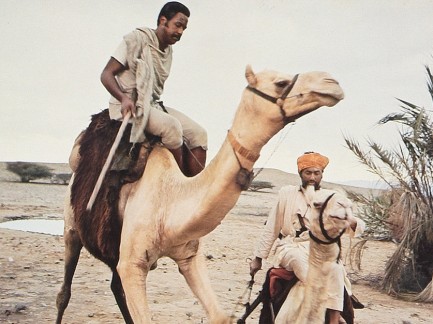 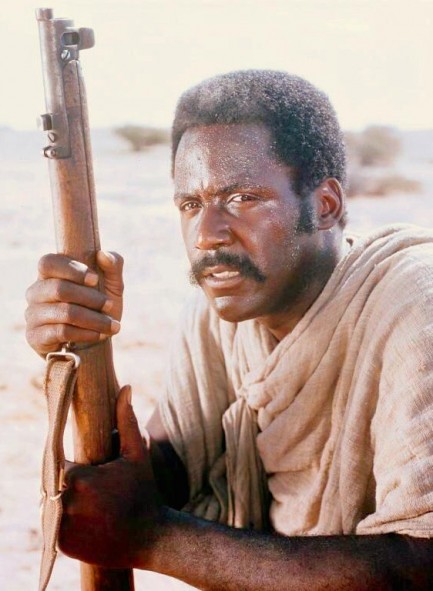 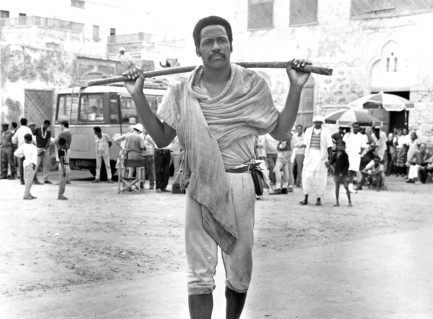 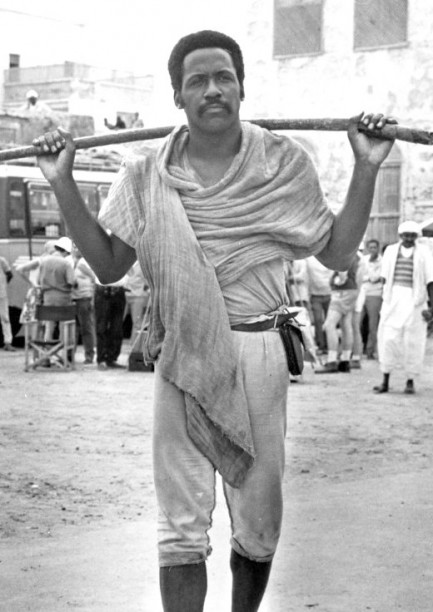 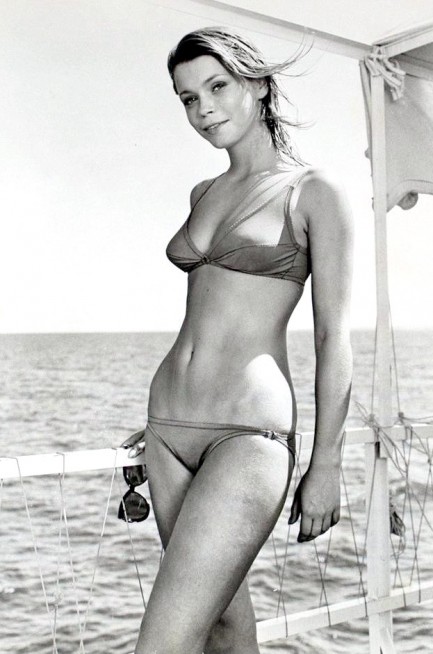 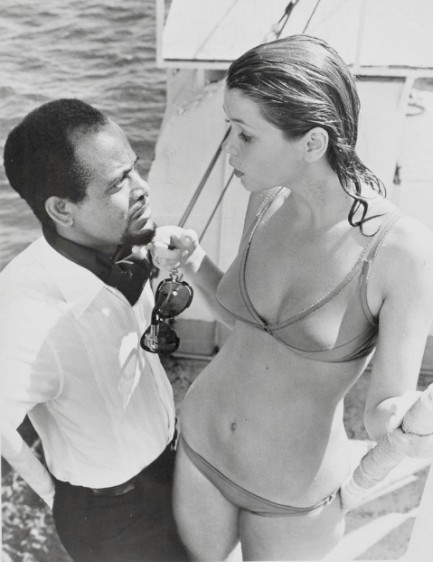 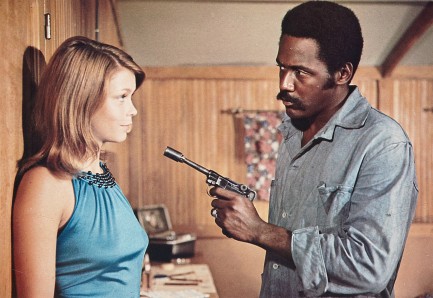 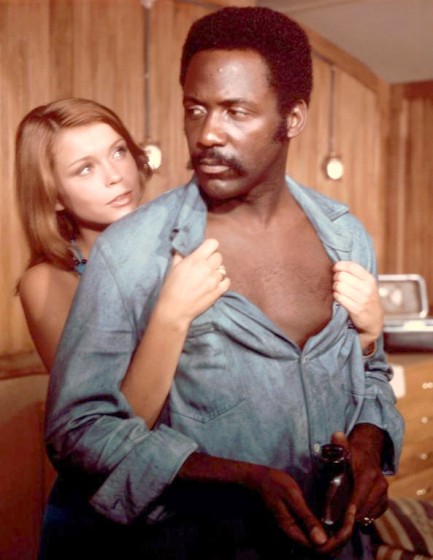 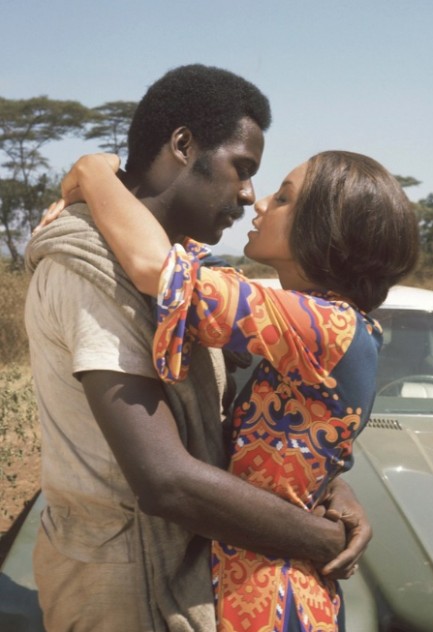 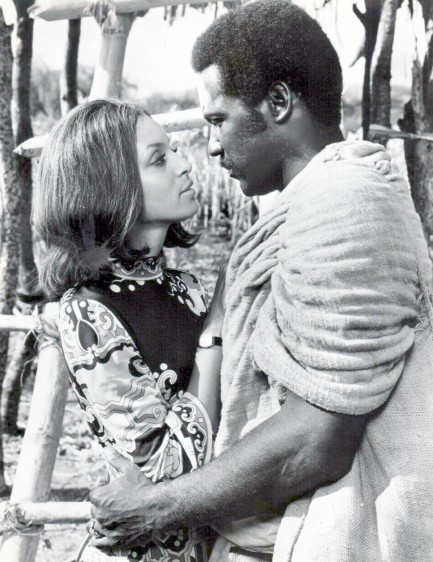 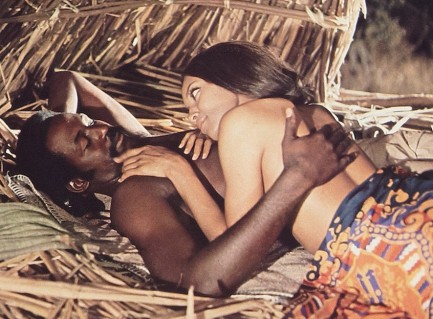   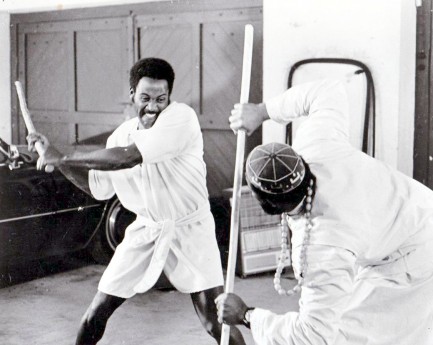 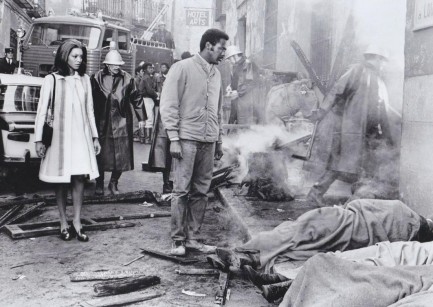 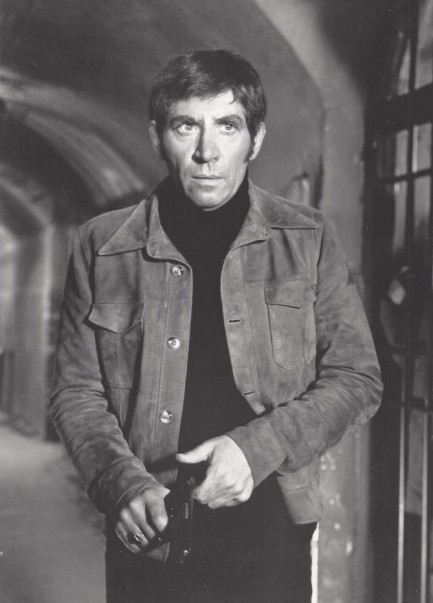 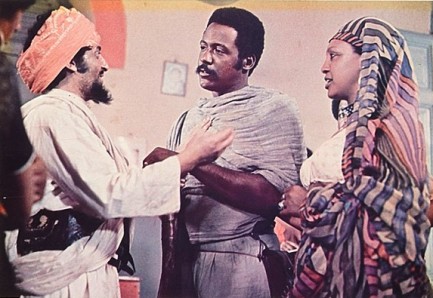  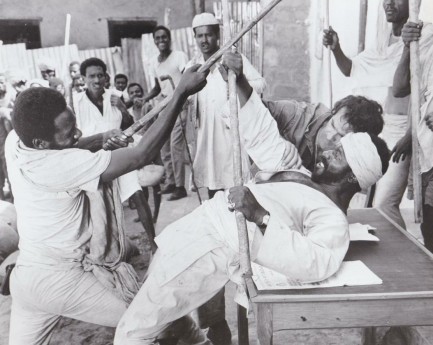 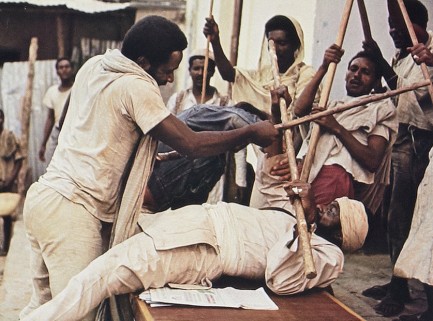 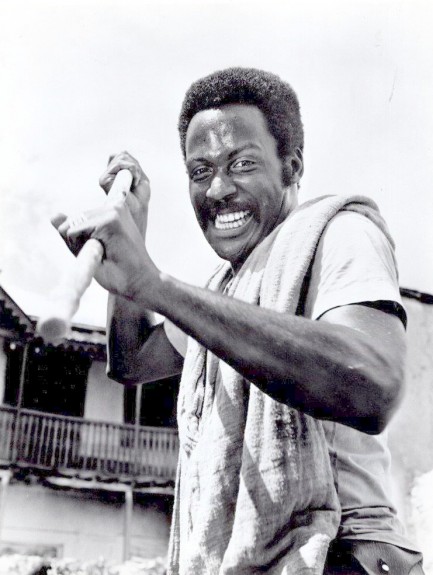 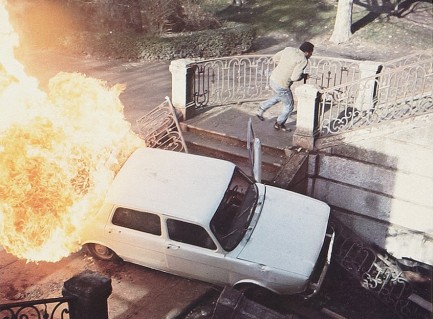  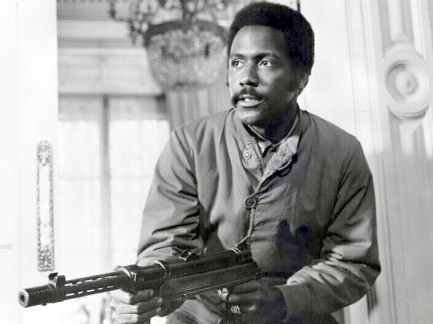 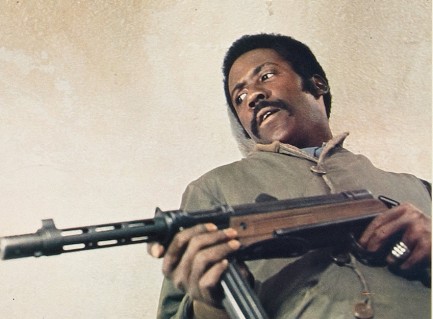
 Jacopetti and Prosperi go on an African exploitation safari. 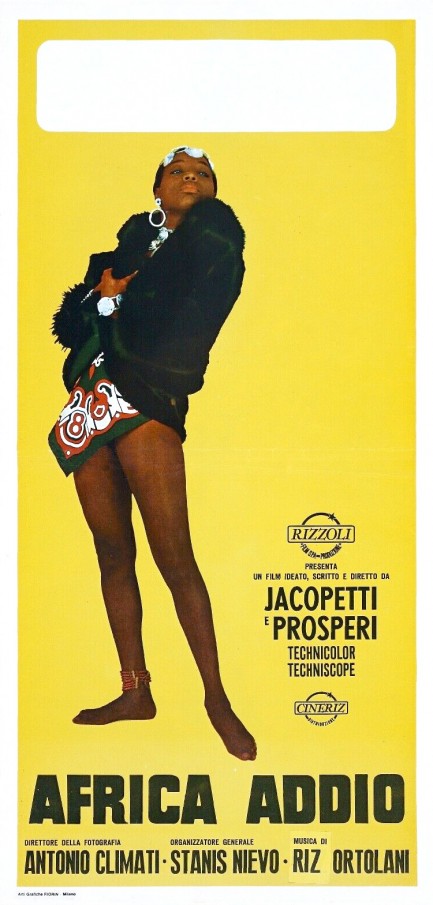
This colorful poster is innocuous, but the movie it promotes sure isn't. Africa Addio is known in english as Africa: Blood and Guts, which speaks volumes to the content of the film. Shockumentary filmmakers Gualtiero Jacopetti and Franco Prosperi capture everything from executions to animal cruelty in an in-your-face attack on an entire continent that paints it as a bloodthirsty free-for-all. Is their point that colonialism was good and Africa retreated into savagery without a steadying white hand? Lucky no cameras were around to film Europeans murdering millions in order to steal Africa's human, natural, and mineral wealth. That would have made a hell of a shockumentary. If one were familiar with the evils and terrors of colonialism, that person might see this film as an indictment of the same, but for any who don't know that history, Africa Addio fills a knowledge vacuum with raw content that isn't helpful. Jacopetti and Prosperi were probably opportunists, not ideologues, but in either case Africa Addio is rough stuff. It premiered today in 1966.

|
 |

The headlines that mattered yesteryear.
2003—Hope Dies
Film legend Bob Hope dies of pneumonia two months after celebrating his 100th birthday. 1945—Churchill Given the Sack
In spite of admiring Winston Churchill as a great wartime leader, Britons elect
Clement Attlee the nation's new prime minister in a sweeping victory for the Labour Party over the Conservatives. 1952—Evita Peron Dies
Eva Duarte de Peron, aka Evita, wife of the president of the Argentine Republic, dies from cancer at age 33. Evita had brought the working classes into a position of political power never witnessed before, but was hated by the nation's powerful military class. She is lain to rest in Milan, Italy in a secret grave under a nun's name, but is eventually returned to Argentina for reburial beside her husband in 1974. 1943—Mussolini Calls It Quits
Italian dictator Benito Mussolini steps down as head of the armed forces and the government. It soon becomes clear that Il Duce did not relinquish power voluntarily, but was forced to resign after former Fascist colleagues turned against him. He is later installed by Germany as leader of the Italian Social Republic in the north of the country, but is killed by partisans in 1945.
|

|
|

It's easy. We have an uploader that makes it a snap. Use it to submit your art, text, header, and subhead. Your post can be funny, serious, or anything in between, as long as it's vintage pulp. You'll get a byline and experience the fleeting pride of free authorship. We'll edit your post for typos, but the rest is up to you. Click here to give us your best shot.

|
|
































































































































































